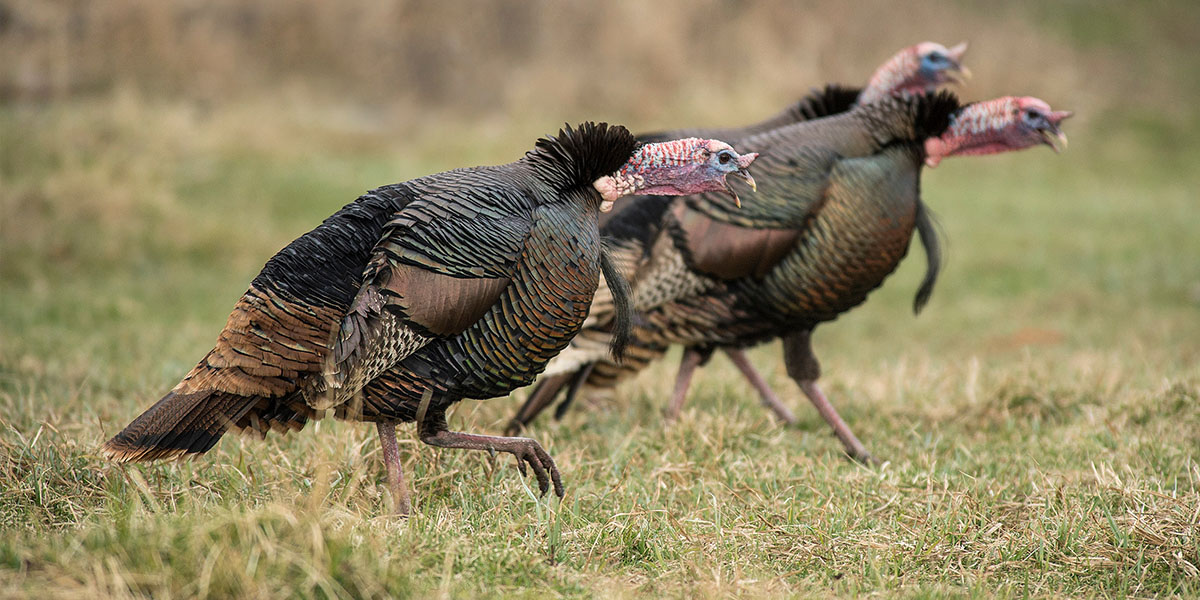
You’ve got questions. We’ve got answers—and if we don’t, we’ll make ’em up. Every day fellow MeatEaters send us more than 100 emails and direct messages. Some are excellent questions, and we have to think really hard (or get really creative) to answer them. So, we decided to publish a series of our favorite FAQs. We’re here to help you become better hunters, anglers, cooks, and conservationists, so talk to us, ask us anything, and let us know what we got wrong. This week, we’re opining about shock gobbling turks, wild game stock, and using circle hooks.
What’s your ratio of bones, veggies, and water for making wild game stock? -Trevor, Washington
This is one of the most common things I get asked about, but it’s hard to answer the ratio for wild game stock. I don’t believe in exact measurements because it’s all about maximizing the amount of bones you have, whether that’s 5 pounds or 20 pounds.
A good rule of thumb is to include roughly one-third the amount of vegetables to the amount of the bones (so if you have 9 pounds of bones, use 3 pounds of vegetables). For the vegetable ratio, I use 25% celery, 25% carrot, and 50% onion. A handful of herbs and a sprinkle of peppercorns are great additives.
When it comes to figuring out how much water to add, remember that you only want to fill the pot with enough to barely cover the bones. The goal is to get the most out of your game, which you can accomplish by breaking it down into smaller pieces. You’ll use less water, which results in a shorter simmer time and more flavorful stock. –Danielle Prewett
You guys talk a lot about locating turkeys with shock gobbles, but I haven’t had much success doing it. How exactly do you get a tom to shock gobble? -Jess, Oklahoma
My preferred method for getting a tom to shock gobble depends on the time of day. Pre-dawn and early morning I owl hoot with my voice. As the day progresses, I switch over to crow caws, both with my voice and a crow call. Late afternoon, I’ll resort to anything, including car horns and yelling, depending on my frustration level. Come dusk when I’m roosting birds, I use a coyote howler. It’s my loudest shock call and will reach birds a mile away in open country.
Almost any loud, piercing noise will make a tom gobble, though. But for reasons unknown to me some don’t work on certain days, so it’s good to have diversity of calls in your vest.
I’ll also try loud, excited yelps and cuts, but there’s a problem with hen calls. If he answers, or doesn’t, I’ve disclosed my location to him as a potential mate. I have no idea what he’ll do next. He could be on a dead sprint my way, so the best course of action is to sit down, continue the conversation, and get ready. On the other hand, if I use a crow or owl call and get a response, the tom thinks he’s answering some other bird. This gives me the opportunity to adjust my setup prior to engaging in conversation as a willing female. –Janis Putelis
In what situations should I use a circle hook? -Beck, Ohio
I tend to opt for circle hooks in two scenarios. The first is when I’m targeting large fish with big live or cut baits. That may be blue cats with shad chunks or striped bass with live bunker. In these instances, it’s beneficial to give a fish more time to work that large bait into its mouth, therefore increasing the odds it will get swallowed entirely. Provided you know how to properly set a circle hook, even a fish that has swallowed the bait is less likely to end up gut hooked.
The second scenario is when I’m soaking baits but not holding or standing close to the rod. I might set multiple rods in holders and spread them out to chunk for stripers, catfish, or bowfins. If a bait gets picked up and I’m not there to tend to it, most of the time that circle hook will set itself just from the resistance of the rod bend. –Joe Cermele




Conversation